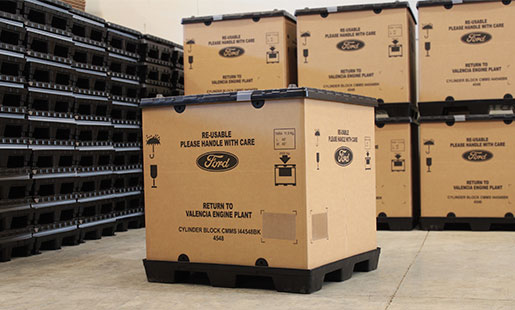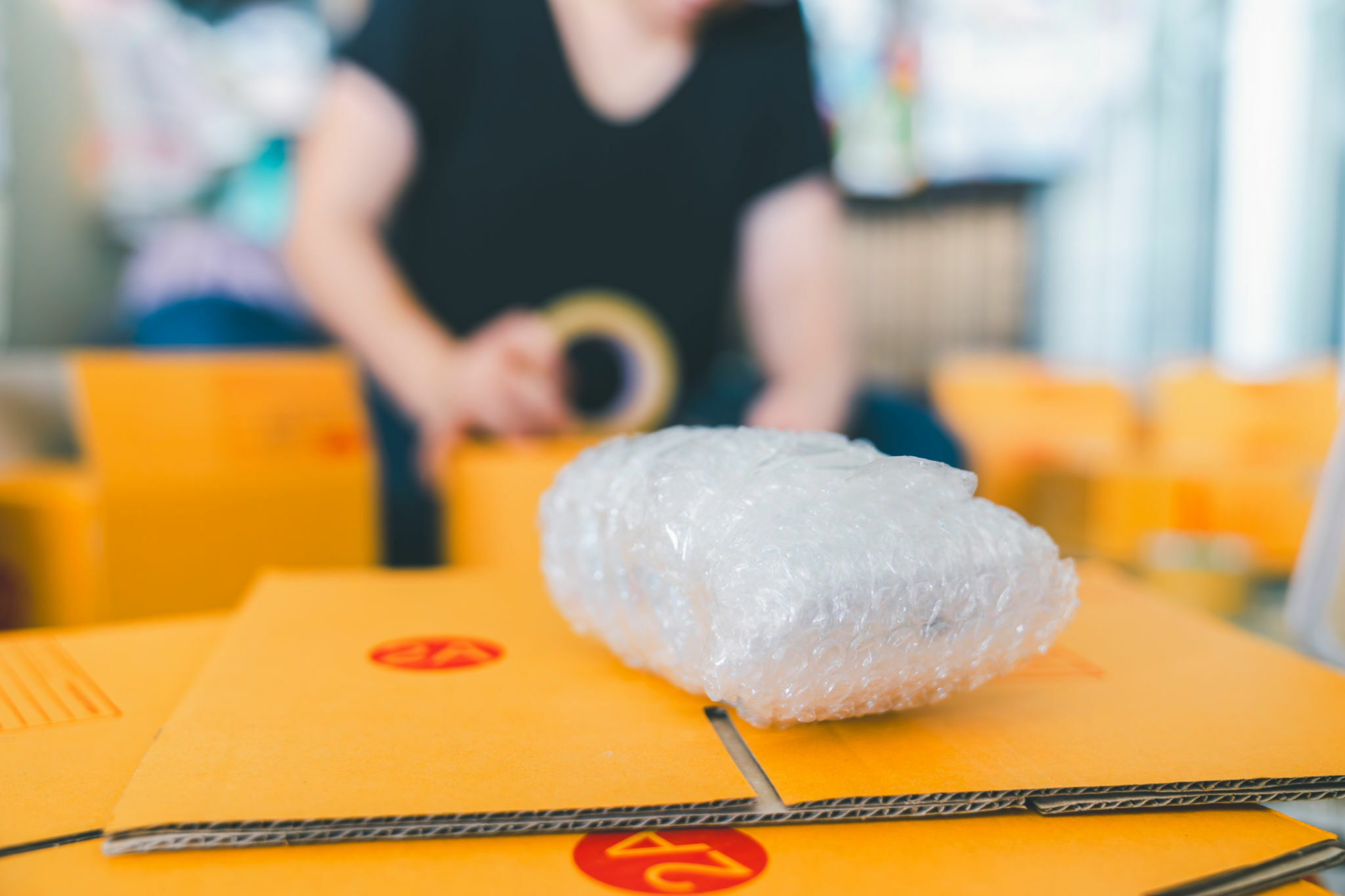Effective Industrial Recycling Solutions for Sustainable Product Packaging: A Comprehensive Overview
That's where this thorough guide on reliable commercial recycling solutions for lasting product packaging comes in. By checking out crucial locations such as packaging product choice, making for recyclability, executing reusing facilities, working together with recycling companions, and monitoring and measuring reusing success, this overview will equip you with the knowledge and devices required to make enlightened decisions and drive positive modification within your organization. Whether you're a product packaging specialist, sustainability supervisor, or simply interested in the subject, this guide will provide beneficial understandings and strategies to help you browse the world of sustainable product packaging.
Product Packaging Product Choice
The option of product packaging materials plays an essential role in making sure the sustainability of commercial reusing solutions. When it pertains to sustainable product packaging, the selection of products is essential in lessening environmental effect and taking full advantage of reusing effectiveness. Picking the appropriate products can help in reducing waste generation, preserve resources, and promote a round economic situation.
Materials like cardboard, paper, glass, and specific types of plastics can be reused multiple times without losing their quality. On the other hand, products that are tough to recycle, such as non-recyclable compounds or combined plastics, can develop obstacles for the reusing procedure and may finish up in landfills or burners.
An additional factor to consider is making use of eco-friendly and naturally degradable products. Product packaging made from renewable energies, such as plant-based plastics or biopolymers, can help in reducing dependence on fossil fuels and alleviate climate modification. Additionally, naturally degradable products break down naturally gradually, decreasing the buildup of waste in landfills.
In addition, the weight and quantity of product packaging materials ought to be lessened to minimize transportation expenses and power consumption. Lightweight products not just require less resources during production however likewise add to decrease carbon emissions during transportation.
Designing for Recyclability
In order to make sure the recyclability of product packaging products, thoughtful layout is essential. Designing for recyclability involves producing packaging that can be quickly sorted, separated, and processed in recycling centers. One important aspect of designing for recyclability is the choice of products. Product packaging developers need to focus on making use of products that are commonly accepted for recycling and have developed reusing frameworks. Products such as glass, light weight aluminum, and particular kinds of plastic, like pet dog and HDPE, are typically recycled and must be liked over products that are challenging or expensive to recycle.
One more essential consideration in making for recyclability is the elimination of unnecessary parts or products. By reducing the number of layers, finishings, and extra parts, product packaging can be made easier and much easier to reuse. Furthermore, developers ought to intend to minimize making use of blended materials, as they can complicate the reusing process.

Implementing Recycling Framework
Efficient implementation of recycling framework is vital for the success of industrial recycling remedies. Without appropriate infrastructure in area, the recycling procedure becomes ineffective and ineffective, impeding the total objective of lasting packaging.
To carry out reusing facilities properly, several essential variables need to be thought about. There must be an efficient collection system that facilitates the separation and collection of recyclable products. This can include assigned reusing bins in public areas, along with partnerships with waste monitoring firms for curbside pick-up and sorting.
Once collected, the recyclable materials require to be transported to recycling facilities in a timely way. This requires efficient logistics and transportation networks, making sure that the products reach the proper centers right away.
At the recycling facilities, progressed sorting and processing modern technologies must remain in location to divide different sorts of materials properly. This consists of using automated sorting devices, optical scanners, and hand-operated sorting strategies.
In addition, there should be a robust market need for recycled materials. This can be accomplished via cooperations with suppliers and markets that make use of recycled materials in their production processes. Producing a steady market for recycled products incentivizes the recycling industry and advertises the circular economy.
Collaborating With Recycling Allies

One secret element of collaborating with recycling partners is the establishment of clear interaction channels. It is necessary to develop open lines of communication to promote the exchange of info, updates, and feedback. This allows both parties to stay informed regarding the development of recycling initiatives and address any type of challenges or problems that might emerge.
In addition, collaboration can include collaborations in industrial packaging solutions developing and executing recycling programs. Reusing companions can provide valuable insights and guidance in creating efficient collection systems and establishing the most proper recycling technologies. By collaborating, organizations and reusing partners can enhance the reusing process and decrease waste.
Moreover, partnership can expand beyond the functional aspects of recycling. It can likewise incorporate advocacy and education efforts. By joining forces, companies and reusing companions can increase recognition about the value of recycling and advertise the fostering of lasting packaging practices among customers and various other stakeholders.
Monitoring and Measuring Recycling Success
To make certain the effectiveness of industrial recycling services and the accomplishment of lasting product packaging objectives, it is essential for companies and their reusing partners to establish a thorough system for tracking and gauging recycling success (industrial packaging solutions). Tracking and determining reusing success permits services to analyze the influence of their reusing initiatives, determine areas for enhancement, and set meaningful targets for future progression
One method to track recycling success is through the use of information collection and analysis devices. By accumulating information on the quantity of product packaging waste produced, the percentage of waste that is recycled, and the sorts of products being recycled, businesses can gain beneficial understandings into their reusing performance. This data can after that be evaluated to determine fads, patterns, and locations of ineffectiveness.
An additional essential aspect of monitoring and determining recycling success is establishing standardized and clear metrics. This allows organizations to compare their efficiency against sector criteria and track their progression in time. Metrics such as recycling prices, waste diversion rates, and greenhouse gas exhausts can offer a quantitative action of an organization's recycling success.

Final Thought
To conclude, applying reliable industrial recycling solutions for lasting packaging needs mindful factor to consider of product packaging material option, designing for recyclability, applying recycling infrastructure, working together with reusing companions, and tracking and gauging recycling success. By integrating these methods, organizations can add to a more environmentally-friendly and lasting method to product packaging, decreasing waste and advertising the circular economy.
By discovering essential locations such as product packaging material selection, creating for recyclability, implementing recycling framework, working together with reusing partners, and tracking and gauging recycling success, this overview will outfit you with the knowledge and devices required to make informed decisions and drive favorable adjustment within your organization. Packaging developers should prioritize the usage of products that are commonly accepted for recycling and have actually developed recycling frameworks.Collaboration with recycling partners is important for the effective implementation of industrial recycling options and the success of sustainable packaging goals. By signing up with pressures, organizations and reusing partners can raise awareness regarding the relevance of reusing and advertise the fostering of sustainable packaging practices among consumers and other stakeholders.
By accumulating information on the quantity of packaging waste produced, the portion of waste that is recycled, and the types of materials being reused, companies can acquire beneficial insights into their recycling performance.